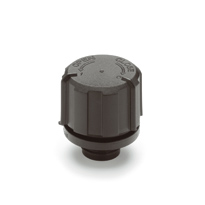
Breather caps are commonly used with combustion engines. Also known as breather valves, they are designed to regulate the internal pressure of a given space. As the pressure inside of a combustion engine increases, the breather cap will release it so that it doesn’t blow any mechanical seals. What are breather caps exactly, and how do they work?
The Basics of Breather Caps
Breather caps are caps that allow combustion engines, as well as other pressurized machines, to “breathe.” They are essentially ventilation devices.
While breather caps look like normal twist-on caps, they allow hot gases to escape. Some breather caps also allow clean air to enter. Regardless, all breather caps will regulate the engine’s internal pressure.
How Breather Caps Work
Breather caps are designed to regulate the internal pressure of a given space, such as a combustion engine. They provide a controlled outlet for hot gases.
When a combustion engine burns fuel and air, it will produce hot gases. These hot gases will increase the internal pressure of the combustion engine, potentially jeopardizing the integrity of gaskets and seals. A breather cap will relieve this pressure by allowing some of the hot gases to escape. As the hot gases make their way past the breather cap, the combustion engine’s pressure will normalize.
Common Features of Breather Caps
Breather caps are often equipped with a built-in filter. The filter element is responsible for removing dirt, debris and moisture from the air. Without a filter element, some of these impurities may enter the combustion engine. If left unchecked, they may cause premature wear and tear that shortens the engine’s lifespan.
Because they are designed for use with combustion engines and other pressurized, fluid-filled tanks, breather caps are durable. They are designed to withstand oils solvents and other chemicals.
Some breather caps feature a splash guard. A splash guard is a protective covering that’s designed to protect against splashes. When driving a vehicle or using a piece of machinery, fluid within a tank may splash around. A splash guard will serve as a barrier between the breather cap’s mechanical seal and the splashing fluid.
There are also breather caps with a dipstick. With a dipstick, you can easily check the fluid level. Dipsticks are rod-like devices that are designed to measure the amount of fluid in an engine or tank. Some breather caps have a dipstick connected to the bottom. When you remove the dipstick, you’ll see fluid residue on the dipstick, allowing you to gauge the fluid level.
